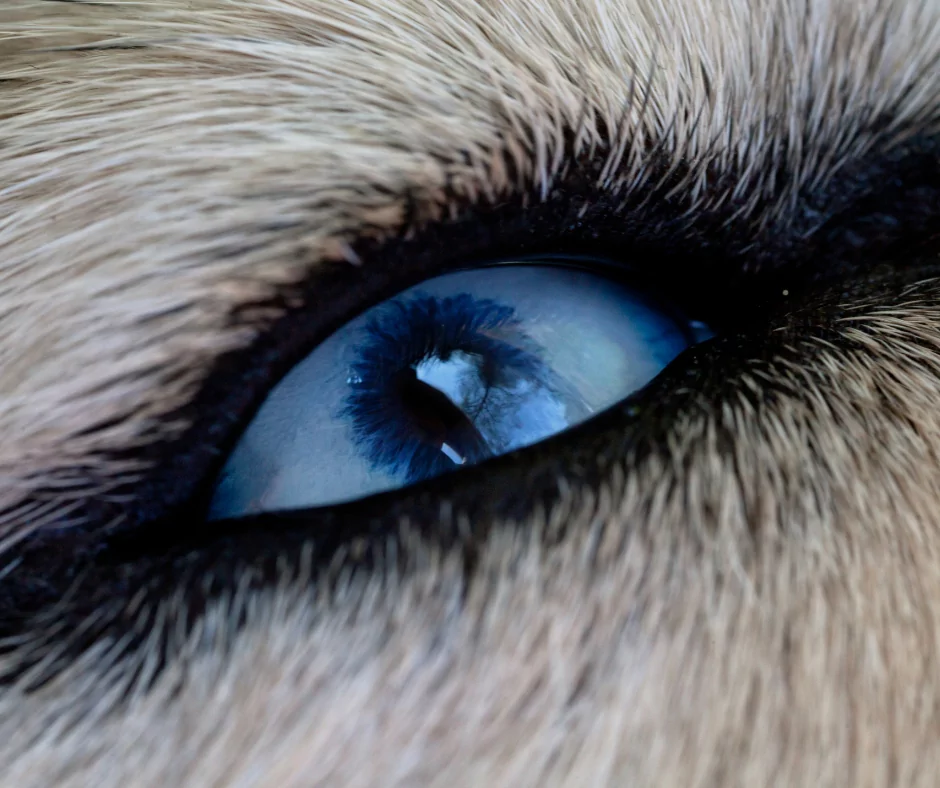Pannus in dogs is a fairly common condition that can be quite unknown in the eyes of pet owners. This condition can sometimes be brushed off as changes in the eye due to aging, so it is important to know the facts. Pannus can lead to blindness if left untreated, so this odd cloudy change in a dog’s eye should be well understood.
What is Pannus?
Pannus or chronic superficial keratitis is an immune-mediated disease that affects the cornea and the third eyelid in dogs. This disease causes inflammation in the eye due to an inappropriate immune response, and will often affect both eyes.
This condition can start in the soft tissues of the eye, and eventually spread across the cornea. As the disease progresses, it can lead to cloudiness in the eye, vision impairment, and even blindness.
What Are The Clinical Signs of Pannus?

The initial symptom of pannus will appear as a pink mass on the cornea of the eye, or inflammation in the third eyelid (the pink part of the eye). Over time this mass will begin to darken and spread across the cornea. This “mass” will become flat and can cover a large portion of the eye as the condition progresses. This in itself can cause significant vision impairment. Symptoms often noted by pet owners include:
- Change in color of the eye.
- Noticeable vision impairment.
- White fatty growths near the cornea.
- Opaqueness to the eye.
- Redness and swelling of the third eyelid.
- Eye irritation in severe cases.
- Discharge in the eye.
What Are The Causes of Pannus?
Pannus is an immune-mediated condition, meaning it is caused by an inappropriate immune response. Like other immune-mediated conditions, there is no absolute cause to this condition. While there is no certain cause, some factors have been linked to pannus.
Dogs who have a large exposure to sunlight, UV rays, smoke, or high altitudes have been linked to this condition. Many active, outdoor breeds are more prone to pannus due to their increased sun exposure and outdoor activities they participate in.
You may have seen canine athletes with goggles because of this. Some breeds are also pre-disposed to this condition, making it possible that this condition is inherited. Among those who are at a higher risk are German Shepards, Greyhounds, Border Collies, Labrador Retrievers, and Dachshunds.

How is Pannus Diagnosed?
Many pannus diagnoses are made from a physical examination of the eye and a review of the medical history. Along with a physical examination, diagnostic tests are recommended to rule out any other eye conditions.
Diagnostic tests include corneal staining of the eye with fluorescein, intraocular pressure testing, and conjunctival scrapings for biopsy. While a standard veterinarian can diagnose this condition, it is always recommended that a follow-up with an ophthalmologist is perused.
Treatment for pannus is long term, so it’s important that every treatment avenue is explored.
What Are The Treatment Options For Pannus in Dogs?
Unfortunately, there is no cure for pannus. While there is no cure, there are ways to lessen the severity of the condition, and put a halt to the progression. Treatment often involves using topical corticosteroids, or other immune modulated drugs.
Some patients have warranted a steroid injection under the conjunctiva in severe cases. Secondary to the treatment with the use of steroids, anti-inflammatories, and antibiotics may be added to the treatment plan. Some dogs have severe inflammation that can lead to secondary infection, so these medications are helpful in those situations.
It is also important to consider using an e-collar if the dog is pawing at their eye due to any discomfort, as any additional trauma will only cause more complications.
Once pannus is diagnosed, treatment and regular follow-ups are required for life. While treatment can halt the progression of this condition, any lack in follow-up and medical care can cause a flare-up.

The Prevention of Pannus
When it comes to the prevention of pannus, the only known tool of prevention is to lessen a dog’s exposure to UV rays. If a dog is often outdoors, it’s recommended to keep the dog indoors during the sunniest part of the day.
If this is not possible, specialty dog sunglasses can be of great use. Specialty glasses are often recommended in cases that have already been diagnosed in order to slow the progression of the disease. Having a dog shelter in your yard is also a great way to limit a dog’s exposure to UV rays.
When the sun is at its peak, your dog can hide away in the shelter, helping to reduce the risk of excessive exposure. It is also important to limit exposure to smoke. Second-hand smoke exposure is risky in many ways to dogs but has also been linked to pannus and other eye conditions.
While pannus cannot be cured, it is a completely manageable condition. This is why it’s so important to monitor any changes in a dog’s eye, and take even the minor changes seriously. What some refer to as “old dog eyes”, could end up being something more serious. Try your best to limit each dog’s exposure to the sun, and keep pannus in mind for any possible diagnoses in the future!
If you need information about other eye conditions that may affect your pet, read the article Cherry Eye in Dogs on our blog!
